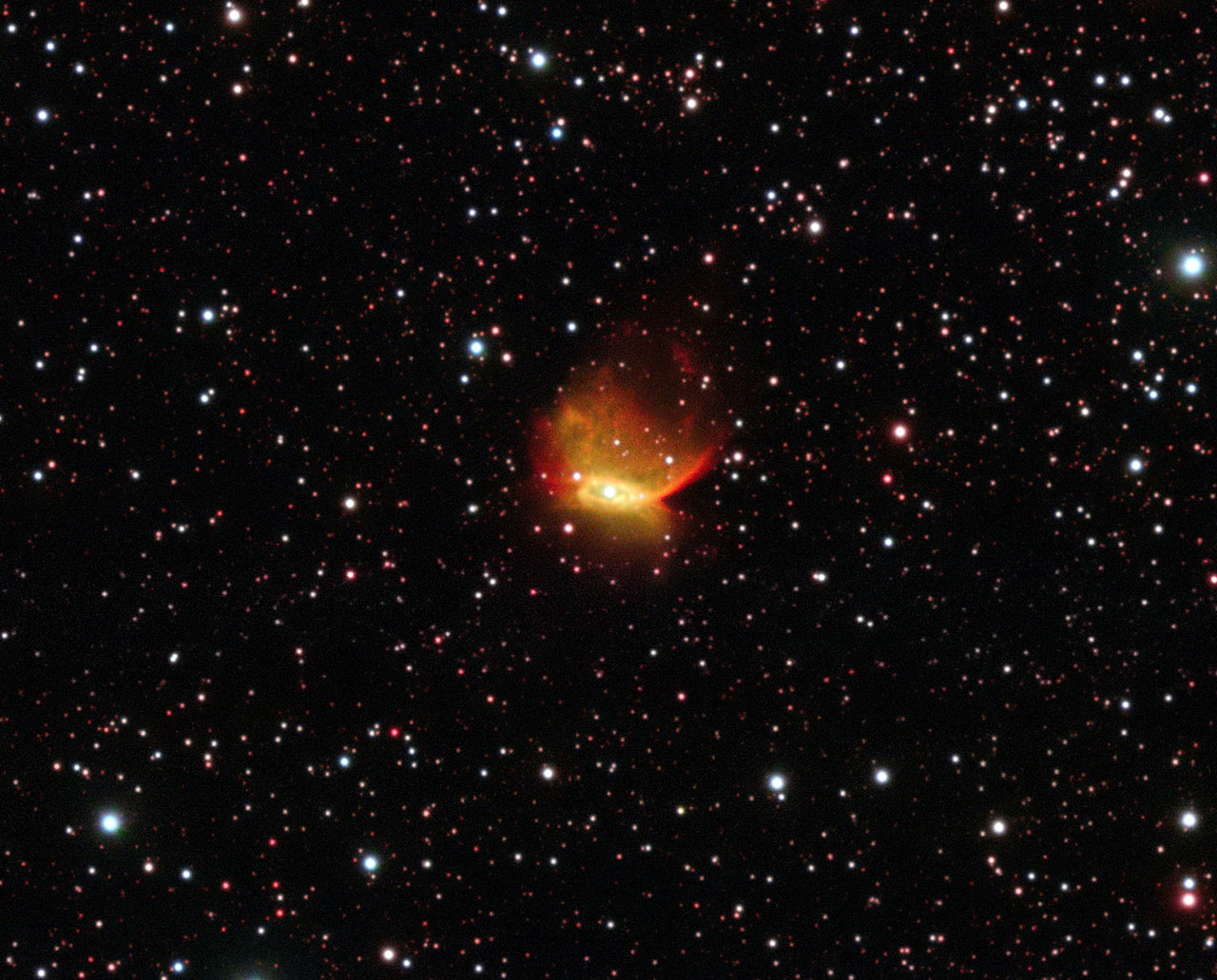Doomed White Dwarf Stars to Spawn Supernova in Colossal Crash

The days are numbered for two newly discovered dead stars locked in a spinning spiral of doom that will eventually lead to a catastrophic collision that triggers a supernova explosion, astronomers say.
The stellar corpses — highly dense objects known as white dwarfs — were spotted inside a dense cloud of gas and dust known as a planetary nebula. Currently, the white dwarfs orbit each other once every 4 hours, but their orbit is shrinking, and in about 700 million years, the two white dwarfs will see a cataclysmic crash, scientists said. They also created a video animation of the star collision to show the cosmic smashup.
The mass of the merged star will be enough to create a thermonuclear explosion, creating a type Ia supernova, the researchers said. This finding may be the first experimental evidence that these types of supernovas emerge from the collision of two white dwarfs, according to a statement from the European Southern Observatory (ESO). [Supernova Photos: Amazing Views of Exploding Stars]
The path to destruction
When the fires of fusion stop burning in the heart of a star, the core may collapse into a highly dense object called a white dwarf.
Meanwhile, much of the material that once made up the outer layers of the star is released into the surrounding area, and may form something called a planetary nebula (which, despite the name, doesn't actually have anything to do with planets).
The newly discovered pair of orbiting white dwarfs was first spotted by astronomers studying a planetary nebula called Henize 2-428, using ESO's Very Large Telescope.
The astronomers were initially studying Henize 2-428 because it is asymmetric, and scientists don't fully understand why some nebulae are oddly shaped.
Get the Space.com Newsletter
Breaking space news, the latest updates on rocket launches, skywatching events and more!
"When we looked at [Henize 2-428]'s central star with ESO's Very Large Telescope, we found not just one but a pair of stars at the heart of this strangely lopsided glowing cloud," Henri Boffin, an astronomer at ESO and a co-author on the new study, said in the ESO statement. The researchers say the presence of a second star could explain the lopsidedness of the nebula.
"Further observations made with telescopes in the Canary Islands allowed us to determine the orbit of the two stars and deduce both the masses of the two stars and their separation," said Romano Corradi, a researcher at the Instituto de Astrofísica de Canarias in Spain's Canary Islands and a co-author on the study. "This was when the biggest surprise was revealed."
The researchers found not only a two-star system, but also what they say is the most massive orbiting white dwarf pair ever discovered. The two stars have a combined mass of 1.8 times the mass of the sun.
In the next 700 million years, the stars will merge into a single star. Without fusion to keep it puffed up, the new star will collapse on itself, generating a type Ia supernova explosion, the researchers said.
Type Ia supernovas are known to form when a white dwarf merges with another star, like a puffed-up red giant (as opposed to Type II supernovas, which form when a single star dies and collapses on itself).
"Until now, the formation of supernovae Type Ia by the merging of two white dwarfs was purely theoretical," said David Jones, one of the paper's coauthors who was an ESO Fellow at the time the data were obtained. "The pair of stars in Henize 2-428 is the real thing!"

All Type Ia supernovas are thought to burn with equal brightness, making them so-called "standard candles." Scientists can measure the apparent brightness of a standard candle, compare it with the actual brightness, and then determine how far away the object is.
"It's an extremely enigmatic system," said Miguel Santander-García of the National Astronomy Observatory in Alcalá de Henares, Spain, and leader of the new study. "It will have important repercussions for the study of supernovae type Ia."
Follow Calla Cofield @callacofield. Follow us @Spacedotcom, Facebook and Google+. Original article on Space.com.
Join our Space Forums to keep talking space on the latest missions, night sky and more! And if you have a news tip, correction or comment, let us know at: community@space.com.

Calla Cofield joined Space.com's crew in October 2014. She enjoys writing about black holes, exploding stars, ripples in space-time, science in comic books, and all the mysteries of the cosmos. Prior to joining Space.com Calla worked as a freelance writer, with her work appearing in APS News, Symmetry magazine, Scientific American, Nature News, Physics World, and others. From 2010 to 2014 she was a producer for The Physics Central Podcast. Previously, Calla worked at the American Museum of Natural History in New York City (hands down the best office building ever) and SLAC National Accelerator Laboratory in California. Calla studied physics at the University of Massachusetts, Amherst and is originally from Sandy, Utah. In 2018, Calla left Space.com to join NASA's Jet Propulsion Laboratory media team where she oversees astronomy, physics, exoplanets and the Cold Atom Lab mission. She has been underground at three of the largest particle accelerators in the world and would really like to know what the heck dark matter is. Contact Calla via: E-Mail – Twitter









